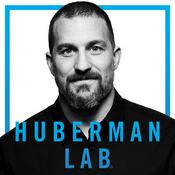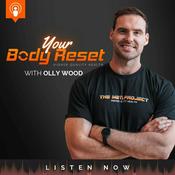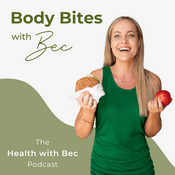8 episodes

Pandemic
28/7/2020 | 24 mins.
Emma spends lockdown at Auckland hospital, and sees how government action on COVID-19 underlines the lack of urgency when it comes to Māori health.Emma spends lockdown at Auckland hospital, and sees how government action on COVID-19 underlines the lack of urgency when it comes to Māori health.By Gabrielle BakerGetting Better consulting producer Gabrielle Baker (Ngāpuhi, Ngāti Kuri) is a public policy and Māori health expert whose focus is on creating a just and effective health system. Here she reflects on hope, worry, and the prospect of a "new normal" after COVID-19.During alert level four, most of us were unsettled in some way. And for many of us, the Covid-19 pandemic brought with it the added worry that Māori would be left irreparably harmed.The worry was built on whānau stories of the 1918 Influenza pandemic, which saw the death rate for Māori approximately seven times as high as it was for non-Māori and decades of research on health inequity in Aotearoa which show across almost every health and disability indicator the health system does less well for Māori than it does for Pākehā.Recently, Dr Melissa McLeod wrote, with a group of other leading Māori health researchers about the increased risks of Covid for Māori. This includes an increased risk of getting Covid and worse outcomes from Covid, not to mention the wider reaching consequences beyond the virus itself, like rising unemployment. All of these concerns were occupying many of our thoughts during alert level four and, in my case at least, driving us to distraction."Whatever it is, coronavirus has made the mighty kneel and brought the world to a halt like nothing else could. Our minds are still racing back and forth, longing for a return to "normality", trying to stitch our future to our past and refusing to acknowledge the rupture. But the rupture exists. And in the midst of this terrible despair, it offers us a chance to rethink the doomsday machine we have built for ourselves. Nothing could be worse than a return to normality."When I read these words from Arundhati Roy's in April, I got to take a moment out of the worries to be a little hopeful. At some point beyond the state of emergency, would we have a once-in-a-generation chance to create a new normal and leave behind the stale ideas in the health system that disproportionately impact Māori whānau, people with lived experience of disability, takatāpui and rainbow communities, refugee and migrant families, and many poorer communities? …Go to this episode on rnz.co.nz for more details

Te Ahi Kaa
28/7/2020 | 26 mins.
Emma travels home to Tukorehe for her tā moko, and gets some advice from Dr Glenn Colquhoun.In this episode of Getting Better we drove to Levin to pay a visit to poet, doctor and youth worker Glenn Colquhoun. But we started that day down the road in Kuku where Emma got her tā moko. By Emma Espiner and Noelle McCarthyOn a road trip to her ancestral home of Tukorehe, in Horowhenua, on State Highway One Emma explained why the time feels right to get her tā moko: "It's not always been obvious, I think, to Māori when I meet them in a hospital or primary care setting, that I'm also Māori and I think people are surprised when I say that, because most people would look at me and know that, but I think it just reflects that power differential, and the fact that there aren't still aren't that many of us. And so I just wanted to enable them to know. To be visible, and to be safe for them."Emma's Uncle Tipi Wehipeihana is a well known tā moko artist who lives a few hundred metres from Tukorehe at Kuku. His studio is at the back of the whare, with a comfy sofa and kete and taonga all over the walls. Emma's cousin Courtney ("the favourite moko") also came for the morning. The tikanga is different from tattoos - Emma didn't come with a design for example. So she had no idea what she was going to come away with, but she knew Tipi would understand the whakawhanaungatanga side of it and also the whakapapa she wanted to represent: "I'm a Wehipeihana on my Dad's side, same as Tipi and Courts. My Pākehā side is my Mum's, she's one of 12 kids from Takaka. Her mum was Ethel Smith, a strong woman in an entirely different mould from my Dad's mum Kura." Sitting down on the stool opposite Tipi, Emma explained: "I was just thinking last night, about Mum and Dad's wedding, it was the first time that Pākehā and Māori whānau met... and I wasn't there. But, you know, these two are intensely Catholic whānau. And then Nanny insisted on bringing her own priest and then Nana had her priest... So it was a two priest wedding! But they came together - and it was awesome." Tipi drew a design freehand across the diagonal of Emma's arm "If you're looking at both sides, your Nanny's side and that connection, we will have something that represents your Māori side there, and the interweaving in the connection with your Pākeha side down here." The whole conversation only took a couple of minutes, which surprised Noelle, but it's a different thing to get your head around if you're not Māori. Tipi explained that part of the design represents "the pools of lineage in which you swim."…Go to this episode on rnz.co.nz for more details

What Does a Surgeon Look Like?
28/7/2020 | 25 mins.
Why do so few indigenous doctors end up becoming surgeons? And why does it matter?For this episode, we travelled to the Leaders in Indigenous Medical Education - LIME - Conference in Ōtautahi, to meet trailblazing surgeons, doctors and medical educators from indigenous populations in Canada, USA, Australia, the Pacific Islands, and Aotearoa. Before that, we spent an evening with Dr Maxine Ronald (Ngāti Wai, Ngāpuhi) who works as a general and oncoplastic surgeon in Whāngerei.By Emma Espiner and Noelle McCarthyThere's an old joke - what's the difference between god and a surgeon?God doesn't think he's a surgeon...That long-standing association of surgery with type A personalities - highly driven, confident (did someone say arrogant?) - exists because the profession draws in people who are comfortable operating in life or death situations - the sorts of situations that also underline their own status, and the power of surgery. So why do so few indigenous doctors end up becoming surgeons? And why does it matter?In this episode of Getting Better, we meet some doctors who are breaking down that white, male Type- A cliche of a surgeon. But although things are changing, they're changing very slowly. If the number of Māori doctors is proportionally small, the number of Māori surgeons is tiny. There are 14 consultant surgeons who identify as Māori. This is out of an overall pool of hundreds - if this figure was proportionally balanced in terms of population, it would be closer to 130. If you're Māori looking to get into surgery, you're not only contending with the intense competition to do surgical training, you're also reckoning with expectations about the best thing you can do with your medical degree, as Maxine Ronald ( Ngāpuhi, Ngātiwai) explains over dinner in Whāngerei: "historically, Māori health has been positioned in primary health care, and public health... with good reason, and in specialities it wasn't well understood where you could make an impact."But even so, Maxine always knew surgery was where she wanted to be: "If you're a Māori doctor, you're expected to contribute, to improve Māori health. And I I wanted to do that, but I just love surgery. And I couldn't not love it and I couldn't do anything else... It still blows me away, this neat feeling - just that immense privilege of, seeing it, of being in theatre, of operating on a real person, with real family and being able to remove disease or pathology... That really seemed like real medicine to me."Maxine is now a general and oncoplastic breast surgeon, working in Whangārei hospital…Go to this episode on rnz.co.nz for more details

Tairāwhiti
28/7/2020 | 26 mins.
Emma's in Tairāwhiti, where "by Māori for Māori" has the potential to be more than just a slogan in healthcare.For this episode of Getting Better, we've stepped outside of day to day medical school training to go to Tairāwhiti where there's a higher proportion of Māori than anywhere else in Aotearoa. With Māori making up 48% of the population, it's one of the strongholds of our language. It also has one of the lowest life expectancy rates for Māori at just 69 years of age compared with 81 years for the general population. Suicide rates here are about double the national average. But with four Māori providers active in the rohe, "by Māori, for Māori" has the potential to be more than just a slogan here. The innovative approaches to mental health in particular singles this region out as the home of some of the most promising indigenous-led services to address our most intractable issues.By Emma Espiner and Noelle McCarthyOn a winter's day last year, we visited Te Kura Huna, a whare wānanga in downtown Gisborne where Ngāti Pōrou psychiatrist Dr Di Kopua introduced us to Mahi a Atua, the mātauranga Māori-based approach to mental health, based on Pūraku that she's developed with her husband, tohunga tā moko Mark Kopua. Dr Kopua explains: "First and foremost, my identity is as a Ngāti Pōrou woman. But that will never take away the fact that I'm a psychiatrist. I worked really hard to get that tohu, and create change. I can always be a psychiatrist, whether I work in the DHB whether I continue to diagnose or prescribe or seclude, or put people under the Mental Health Act, none of those behaviours or behaviours that any psychiatrist wants to do, but the system has perpetuated it for so long. So all of these things that I'm saying don't make me less of a psychiatrist, but they do speak from a Ngāti Porou woman's voice."Speaking from that voice has led to Mahi a Atua, a way of looking at family dynamics through a wholly indigenous lens, with a broader workforce supporting whānau than you'd be able to find in traditional western models. The Mahi a Atua approach was a tool in the kete of many kaimahi working in Te Kūwatawata, the kaupapa Māori mental health programme that was running when we visited Tairāwhiti. …Go to this episode on rnz.co.nz for more details

Southside
24/7/2020 | 26 mins.
Dr Vaaiga Autagavaia takes Emma to meet the Rugby League team he coaches in Sir Edmund Hillary Collegiate, a training programme that goes far beyond sport and into the development of life skills.Dr Vaaiga Autagavaia is a Samoan doctor who grew up in Mangere East. Here he explains how two Māori doctors drew him into a High School rugby programme at Sir Edmund Hillary Collegiate in Ōtara that now uses sport as an innovative way of learning, and outlines the next steps for the programme.By Dr Vaaiga AutogavaiaCoaching High School rugby league at Sir Edmund Hillary Collegiate is a hook that two Māori doctors have found hard to shake. Dr Wiremu and Hoani MacFater (Ngā Rauru, Te Ātihaunui a Papārangi), brothers who grew up in Penrose started coaching the boys' teams four years ago.In the school of predominantly Māori and Pacific students they saw a bit of themselves when boys would often miss some (or all) of their classes but still turn up to training and that this motivation could be used as a strength that, with additional support could help them to fully realise their education potential. From this was born the idea of a school Rugby League programme where sport is used as a context to engage students in their education.Since then, I've joined them to coach, and work alongside the school to develop the idea. We've worked closely with Senior School Principal, Kiri Turketo (Ngāti Whatua,Ngāpuhi), and a passionate and enthusiastic group of senior staff led by Caragh Doherty (Physical Education and Health Head of Department) and Shauna Eldridge (Senior School Deputy Principal).In Term One of this year the programme started as 'Sport In Education' (SIE) with its first Year 9 class that incorporates all sport, not just rugby league, and includes male and female students. The SIE program will progress to involve classes across each year group including delivering NCEA credits from Year 11 onwards. The programme is taught across all subjects (Maths, English, Science, Social Studies, Physical Education/Health) incorporating active pedagogy, sport contextualised curriculum and pastoral support that uses students' strengths as a starting point to motivate them to thrive in the classroom and on the sports field.The ultimate and primary aim of the programme is that educational achievement for students will ensure greater success and wellbeing for their families and communities - if along the way they become international representatives in their sport, it is a sweet bonus…Go to this episode on rnz.co.nz for more details
More Health & Wellness podcasts
Trending Health & Wellness podcasts
About Getting Better
Listen to Getting Better, Huberman Lab and many other podcasts from around the world with the radio.net app

Get the free radio.net app
- Stations and podcasts to bookmark
- Stream via Wi-Fi or Bluetooth
- Supports Carplay & Android Auto
- Many other app features
Get the free radio.net app
- Stations and podcasts to bookmark
- Stream via Wi-Fi or Bluetooth
- Supports Carplay & Android Auto
- Many other app features


Getting Better
download the app,
start listening.








































